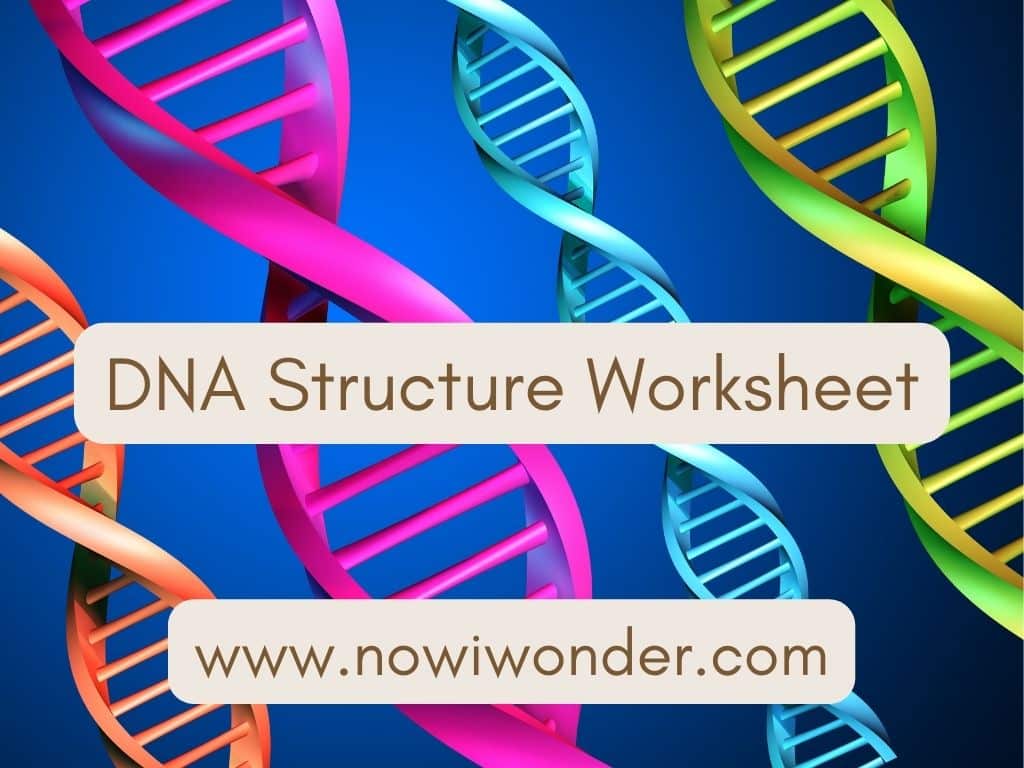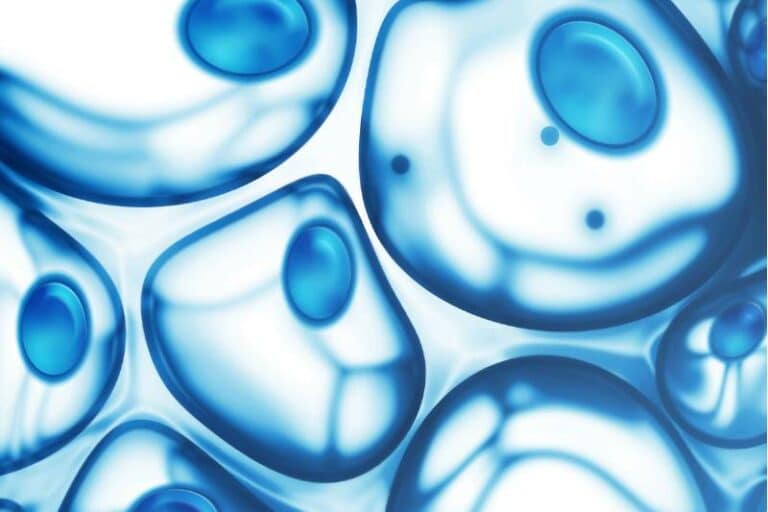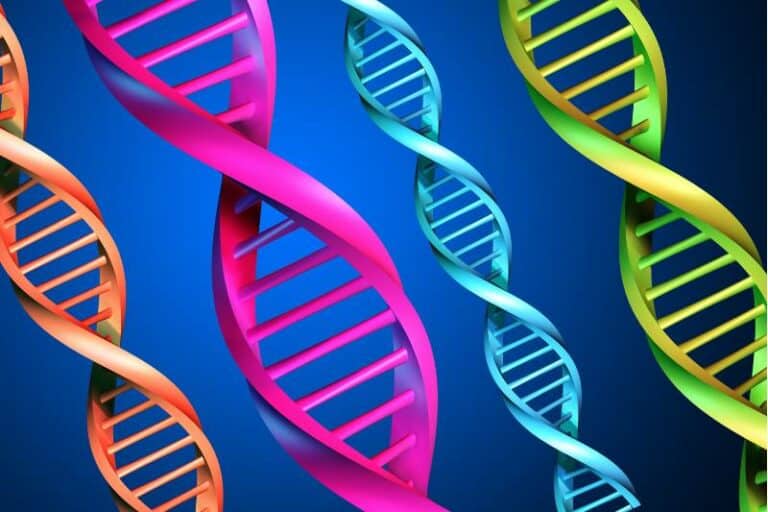
How to use this worksheet
- Study your resources to gain an understanding of the structure of deoxyribonucleic acid (DNA).
- Test your knowledge using the worksheet questions below.
- Download these worksheet questions for free by clicking “Download” here:
- Download this worksheet’s Answer Key for free by clicking “Download” here:
DNA Structure Worksheet
1. What does “DNA” stand for?
2. Within which organelle is DNA found in eukaryotic cells?
- Nucleus
- Endoplasmic reticulum
- Ribosome
- Mitochondria
- Plasmid
- Golgi apparatus
3. What long polymer molecules serve as the information storage device in a cell?
- Carbohydrates
- Acetylcholine
- Microvilli
- Nucleic acids
- Steroids
- Cyclic AMP
4. True or False: Nucleotides are composed of nucleic acids.
5. What is a nucleotide composed of? (Select all that apply)
- 5-carbon sugar
- Phosphate group
- Cholesterol
- GABA
- Nitrogenous base
- ATP
6. How many different kinds of nucleotides does DNA contain?
- One (1)
- Two (2)
- Three (3)
- Four (4)
- Five (5)
- Six (6)
7. Which component of a nucleotide differs between types of nucleotide?
8. Describe the different kinds of nucleotides found in DNA.
9. How does a nucleic acid form?
10. How does the structure of a nucleic acid allow it to store information?
11. Which of the following best describes the structure of DNA?
Choice #1: Two (2) polynucleotide chains composed of mononucleotides covalently bonded between the sugar of one mononucleotide and the phosphate of another to form a sugar-phosphate backbone. Complementary nitrogenous bases attached to the sugar-phosphate backbone point inward toward each other and are linked by hydrogen bonds.
Choice #2: Two (2) nucleotides bonded to the sugar molecule of a carbon isotope by covalent bonds. The isotopes form a sugar-carbon backbone. Complementary phosphoric bases attached to the sugar-carbon backbone point inwards toward each other and are linked by covalent bonds.
12. Why are only two complementary base pairs possible in DNA?
13. Fill in the blank: Write the nucleotide that bonds to each of the listed nucleotides.
- Adenine (A)
- Cytosine (C)
- Guanine (G)
- Thymine (T)
14. Why are hydrogen bonds essential to the structure of DNA?
15. The backbone of DNA consists of?
- Carbon-sulphur chains
- Sugar-phosphate chains
- Iron-carbon chains
- Lipid-sulphur chains
16. Describe rosalind franklin’s contribution to the understanding of DNA structure.
17. Describe james watson’s and francis crick’s contribution to the understanding of DNA structure.
18. Label the main components of DNA:

19. Label these two DNA nucleotides:

20. Label these two DNA nucleotides:




